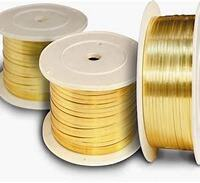1. Introduction
In the past 48 hours, a surge in copper scrap prices has sparked renewed interest among recyclers and hobbyists looking to cash in on their copper holdings. With copper rod price and copper strip price climbing due to global supply constraints and green energy demand, knowing how to properly prepare copper for resale is more valuable than ever.

Stripping copper wire might seem straightforward, but doing it efficiently—and legally—can significantly impact your profit. Whether you’re dealing with thick cables from old appliances or thin strands from electronics, this guide shows you the best way to strip copper wire without damaging the metal or risking safety violations.
2. Why Stripping Copper Wire Matters
Clean, bare copper fetches a much higher price at scrap yards than insulated wire. Burning copper wire for scrap is illegal in many areas and releases toxic fumes, so mechanical or manual stripping is the only safe and compliant method.
Additionally, understanding related copper products—like copper strip, copper rod for welding, or copper bonded ground rod—can help you identify high-value items during your cleanup or demolition projects.
3. Tools You’ll Need
- Wire stripper (manual or automatic)
- Utility knife (for thick cables)
- Heat gun (optional, for stubborn insulation)
- Safety gloves and goggles
- Bucket or container for sorted copper
Avoid using pliers or teeth—these can nick the copper, reducing its resale value.
4. Step-by-Step: Best Way to Strip Copper Wire
4.1. Sort Your Wire First

Separate copper wire from aluminum or mixed-metal cables. Pure copper is typically reddish-brown and flexible. Look for markings like ‘CU’ or ‘Copper.’
Also, identify if you have copper strip wire or flat copper strips—these may not need stripping and can be sold as-is.
4.2. Choose the Right Stripping Method
For thin household wiring (e.g., NM-B or THHN), use a manual wire stripper. Adjust the gauge setting to match the wire size and squeeze gently to cut the insulation without nicking the conductor.
For thick industrial cables, an automatic wire stripper or cable ripper saves time. Feed the wire through slowly, letting the blades score the jacket without cutting into the copper strands.
4.3. Remove Insulation Cleanly
Once scored, pull the insulation off by hand. If it’s stuck, use a heat gun on low setting to soften the plastic—never use open flame.
For multi-conductor cables, strip the outer sheath first, then strip each inner conductor individually.

4.4. Coil and Store Bare Copper
Neatly coil stripped copper wire to prevent tangling. Keep different grades separate: bare bright (clean, unoxidized), #1 copper (clean but slightly oxidized), and #2 copper (tarnished or with minor solder).
5. Common Mistakes to Avoid
Burning copper wire for scrap is not only dangerous—it contaminates the metal with carbon, lowering its grade and value. Many scrap yards now test for burned copper and reject it outright.
Don’t mix copper with other metals. Even small amounts of steel or aluminum can downgrade your entire batch.
Avoid stripping wire outdoors in wet conditions—moisture can oxidize copper quickly, reducing its scrap value.
6. Bonus: Identifying Other Valuable Copper Items
While stripping wire, you might encounter other high-value copper products:
- Copper rod: Often used in welding or grounding. Look for copper welding rod or copper brazing rod—these are pure copper and valuable.
- Copper earth rod or copper bonded earthing rod: Common in electrical grounding systems. Copper bonded steel or copper clad steel ground rod contains less copper but still has scrap value.
- Copper strip: Includes flat copper strip, 1mm copper strip, or copper earth strip 25x3mm. These are used in busbars, earthing, or roofing (e.g., copper roof strip).
- Copper tubing: From AC units (aircon copper pipe) or plumbing (15mm copper pipe, 22mm copper tube). Clean and straight lengths fetch premium prices.
If you’re near a hardware store or electrical supplier, you might also find copper bars for sale, copper round bar, or flexible copper bus bar—all worth collecting.
7. Where to Sell and What to Expect
Call local scrap yards to compare copper strip price and copper rod price before delivering. Ask if they accept copper strip near me or roll of copper strip.
Prices fluctuate daily, but bare bright copper typically earns 20–30% more than insulated wire. Keep receipts and ID—many states require documentation for scrap metal sales.
8. Conclusion
Stripping copper wire for scrap doesn’t have to be tedious or risky. With the right tools and techniques, you can safely extract maximum value from every foot of copper. Whether you’re salvaging from old electronics, HVAC systems, or construction sites, knowing the best way to strip copper cable—and recognizing related copper products like copper clad earth rod or beryllium copper strip—puts you ahead of the curve in today’s hot scrap market.
Our Website founded on October 17, 2012, is a high-tech enterprise committed to the research and development, production, processing, sales and technical services of ceramic relative materials such as How. Our products includes but not limited to Boron Carbide Ceramic Products, Boron Nitride Ceramic Products, Silicon Carbide Ceramic Products, Silicon Nitride Ceramic Products, Zirconium Dioxide Ceramic Products, etc. If you are interested, please feel free to contact us.

